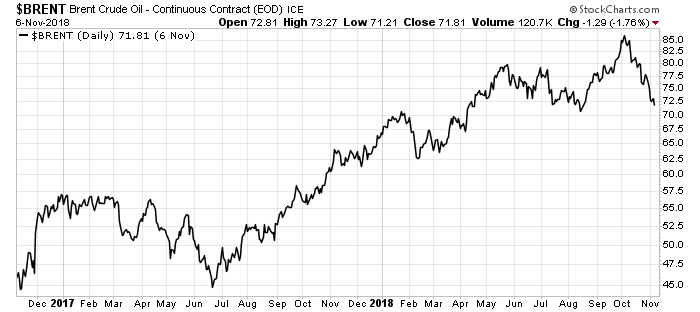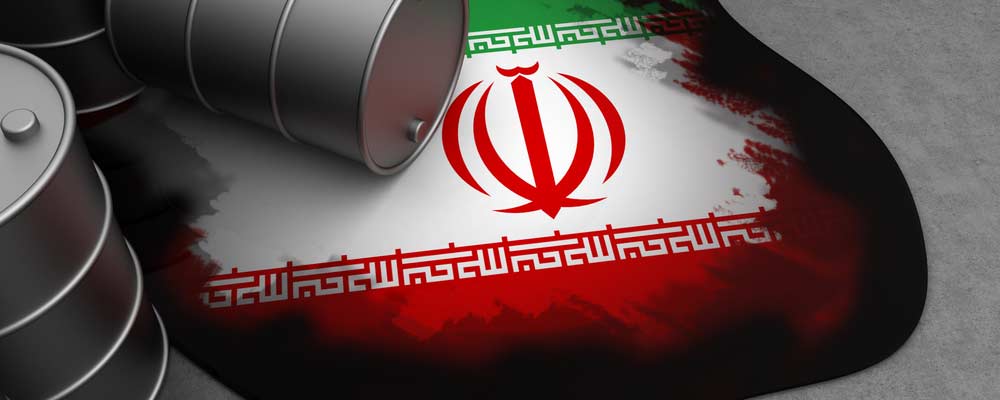After all the chest-thumping, Iran’s sanctions passed with a whimper. Lots of talk … zero teeth.
That’s because the U.S. gave eight countries a free pass to continue to import Iranian oil. China, India, Greece, Italy, Taiwan, Japan, Turkey and South Korea all get to keep importing for another six months.
Those countries represent 75% of Iran’s oil export demand.
Scott Nations, president and CIO of NationsShares, said: “The sanctions against Iran are more like suggestions now.”
That means they had almost zero impact.
But sanctions actually made things worse, because many of those countries had stopped importing Iranian crude a few months ago. Now they are starting back up again.
The Market Has Too Much Oil
From April to the end of October, Iran’s crude exports fell from 2.5 million barrels per day to 1.6 million barrels per day.
Saudi Arabia and the U.S. expanded production by more than that, so the world didn’t feel the pinch.
And with countries able to buy crude from Iran again, the market has too much oil now. The price chart below tells you the whole story:

Brent crude is the European benchmark crude oil price. As you can see, the price marched steadily higher since its two-year low in June 2017 … until October.
Since then it fell from $86 per barrel to $71 per barrel … a 17% drop in just five weeks.
That’s because the markets think we have plenty of oil. TV personality Jim Cramer told his audience that oil prices are going to fall.
That’s the general sentiment around oil today. The Bloomberg Commodity Sentiment gauge fell to 26% bullish on oil. That’s down from 60% at the end of September.
The low in 2018 was 19% set in August. That came right before the price shot from $65 per barrel to $76 per barrel. When the market threw in the towel, the price rose 17%.
That’s what I expect to happen again this time.
The Iran Sanctions Countdown Starts Now
Even though the world has plenty of oil now, the market can tighten quickly.
In the last 12 months, Venezuela’s oil production fell by 600,000 barrels per day. It sits at 1.2 million barrels per day right now. But the decline continues.
At the same time, global oil demand continues to climb. According to the Energy Intelligence Group, oil demand grew by 2.1 million barrels per day in 2018.
That means supply must keep up. And up until now, it has. But looking forward, we see a far grimmer picture.
Today, Iran has about 1.5 million barrels per day in exports.
The waivers expire in 180 days. There is uncertainty in how much oil will be shut in from Iran. This will become a slow cinching off Iran exports over the next six to 12 months.
Oil supply will eventually fall behind. That means we are close to the low point in oil prices for the next year.
Good investing,

Matt Badiali
Editor, Real Wealth Strategist










